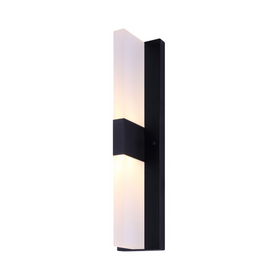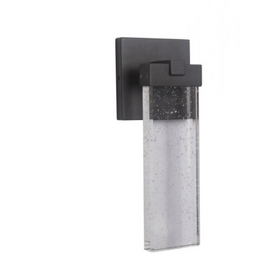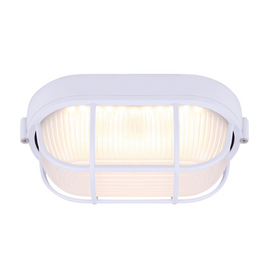
Living Fences for Every Backyard
Last Updated: Mar 28, 2025We live in a world of boundaries. Whether they be a city, state, or country, humanity has a long history of drawing a line in the dirt to separate our land from theirs. As a result of this fragmentation of our landscape, perfectly square fields, city blocks, and property lines exist in place of once-vast grasslands and towering forests stood.
But why not choose a boundary that isn’t as rigid. A living fence is a great way to define your property's edge without breaking up the natural world.
Table of Contents
- What is a Living Fence?
- Is a Living Fence Worth It?
- How Do You Make a Living Fence?
- Are Living Fences Secure?
- Espalier Fences and Trellises.

What is a Living Fence?
A living fence is a row of trees or hedges that are tightly spaced and hardy against change. Being both tight and sturdy, they act like a standard fence. These fences can be used to separate property boundaries or different parts of your yard and come with the added benefit of being versatile and beneficial to native wildlife.
A living fence comes in many different shapes and sizes, ranging from a row of sturdy trees tied together with shrubs at their base to a thick hedge of evergreen, giving you a robust screen of privacy. Depending on your climate and knowing what you’re looking for, the homeowner can narrow their search for the correct type of living fence.
Is a Living Fence Worth It?
Modern fences typically serve one purpose. They’re manufactured to be placed in the ground until no longer needed or until the dire need of replacement. A living fence establishes a barrier that can be used to provide small crops, herbs, fodder for animals, or even coppice for your fire pit. A living fence celebrating a diversity of plant species can do many things simultaneously, with the most significant difference from conventional barriers. If properly managed, it can grow for many years.
Choosing a living fence for your property is a lot to consider, so take time and think about it. Take advantage of the first permaculture principle; observe and interact by seeing the site's needs before you begin. The living fence is an excellent example of the permaculture principles in motion: Integrate rather than segregate, use and value diversity, and use edges and value the marginal.

How Do You Make a Living Fence?
There are different ways to create a living fence. Some require more inputs at the beginning, while others may require more maintenance over time.
Choosing the right tree can make a big difference. Let’s consider the willow tree briefly in your future living fence. They are durable yet flexible in their sapling stage, and they are great at holding soil, thus limiting erosion.
The typical way to create a willow fence is to place the saplings in the ground at around 35 rods to a 10-foot line, and as they mature, weave them into a diamond lattice pattern. You can trim them to allow line-of-site through the diamonds or let them fill in as a privacy screen.
As easy as they are to use in fence making, the willow also has a more nefarious side that homeowners with mature trees probably already know. Willows love moisture and will force their roots anywhere that’s wet. Willow roots will clog drains and sewage systems as it searches for water, making it less than ideal in neighborhoods and better for country properties.
It would help if you also considered what you are planting around your living fence. Will you be using sun-loving or shade-tolerant plants? By placing the sun lovers on the sun-facing side of the design with shade-tolerant in the back, you create a level of complexity from the two different microclimates.
Introducing nitrogen-fixers can be a great way to help feed your hedge by pulling that free nitrogen out of the air and putting it back into the soil. Plants of the Alnus genus—or alders—are nitrogen fixers and make great additions between your staple fence trees. Try planting an average of one alder for every two or three trees. Or better, use the same principles of a food forest and different layers of beneficial plants to support the hedge.

Are Living Fences Secure?
If security is an issue, consider some naturally defensive plants at locations across the property. If you’re in the southwest, you may find the cactus as a fantastic guard. Living up north, you can consider plants like thorny blackberry or even rose bushes for food, drink, and deterrence. Even honey locusts with their aggressive thorns can be a deterrent.
If you live in an area with deer, extra steps may be necessary to protect a living fence. By beginning with a standard barrier to limit deer, you can plant your hedge species within the security of your yard until they have matured and are more resilient to being browsed on. At this stage, likely several years later, the fence can be removed, and the living wall left to grow.
Consider using various evergreen and deciduous species in this fence. The diversity allows deer to eat freely and act as a privacy screen with different colors for summer and fall. And if you want to provide the deer with a treat in the hedge, consider cedar as a way to hopefully fill them up before they get curious about your hidden garden.

Espalier Fences and Trellises.
If you’re nervous about committing to a living fence, you always have options. Consider an espalier fence that involves training fruit trees or hardy vines to act as a barrier. Fruit trees that are hardy to your region make great options for this. Some examples would be apples in colder climates or oranges in warmer ones. The beautiful blooms are great for bees, and later in the season, you get to enjoy fresh fruit from your fence.
With an espalier fence, you’re training your plants to follow a fixed frame. Espalier frames are made of wooden posts at either end and a top rail and have taut wires connected to both sides at one-foot intervals. You’re going to plant your fruit trees at the base of this frame, allowing the plant to grow vertically, with branches staying parallel to the fence. Any branches that are perpendicular remove them. You can now train the plants as they grow, gently tying branches to the wire.
Gardening & Outdoor
Shop the best high-performing gardening and outdoor products that impact your health, wealth, and the planet through their use.

Englander Grizzly Camp Stove ESW0030
Englander
In Stock

Englander Cub Camp Stove ESW0034
Englander
In Stock

Englander Black Bear Camp Stove ESW0032
Englander
In Stock

Canarm CORIN LED Black Outdoor Light
Canarm
Out of Stock

Click & Grow Smart Garden 9
Click & Grow
In Stock
3 Colors

Click & Grow Smart Garden 3
Click & Grow
In Stock
3 Colors

Englander Grizzly Kit Camp Stove ESW0031
Englander
In Stock

Englander Black Bear Kit Camp Stove ESW0033
Englander
In Stock

Craftmade Aria Outdoor LED Wall Mount Light
Craftmade
Out of Stock
2 Colors

Canarm LOL386WH White LED Outdoor Sconce
Canarm
In Stock

And if you want something ornamental instead, try to find something with blooms and color. In my opinion, nothing beats the sweet smell of lilac or the vibrant color of bougainvillea. Placing a lilac hedge just upwind from your home can aid in wafting the fresh scent through your property and to your home in the spring.
Are you looking for a seasonal screen? Use annual plants like peas, beans, or squash to give you a seasonal privacy screen that provides food to your home. Consider adding trellising at the back of planter boxes to create sections in your backyard. These trellises can even be used to shade bedroom windows from the summer sun or a patio where you can rest after a long day.
As with everything, research what plants work best in your climate and design accordingly. Living fences give us the privacy we need while providing the habitat and structure supporting nature around us.
Tanner Sagouspe
Tanner Sagouspe has a Masters in Environmental Management and is a Permaculture Designer who promotes tackling the climate crisis at home.
